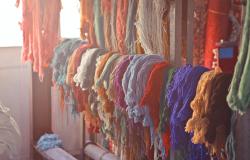
In many developing countries, the apparel industry is seen as a ‘stepping stone’ towards industrialisation. Countries rely on foreign investment to enter the garment sector by engaging in simple assembly production and aim to gradually upgrade along the value chain by building their networks and capabilities. By comparing case studies in Africa and Asia, this article shows that foreign investors contribute differently to upgrading and creating linkages. The study reviews the historical experiences of Bangladesh, Cambodia, Lesotho and Madagascar to understand the roles played by various types of foreign investors in contributing to upgrading. The model of production of these investors and their embeddedness in the host countries’ markets shape their contribution towards upgrading. This has important policy implications, suggesting that government policies aiming to develop the garment sector beyond the assembly stage need to correctly identify and attract the investors that are most likely to be or become ‘embedded’. The case studies also highlight the importance of creating a domestic class of entrepreneurs that can actively contribute to the development of the garment industry.
Policy Implications
- To contribute to the upgrading of the garment sector, it is important to promote locally-embedded Foreign Direct Investment and domestic investment.
- If policy makers are interested in upgrading the domestic garment, they should not encourage all foreign investment equally, but should try to prioritise those that may be more ‘embedded’ in their domestic production network.
- Alongside this, policy makers should incentivise domestic businesses, and create a class of domestic entrepreneurs that has a strong stake in the sector.
Photo by Andrea Piacquadio